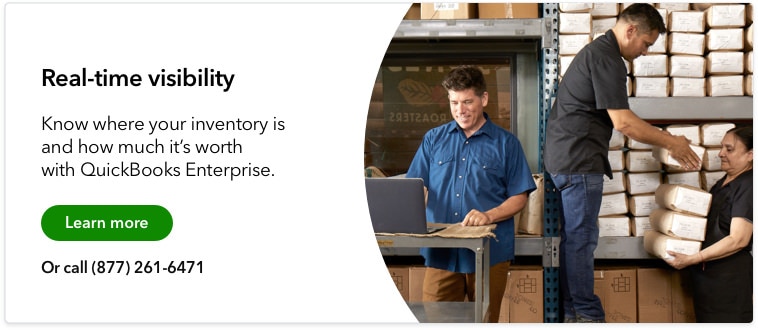Supply chain optimization is the process of improving the efficiency and performance of a company’s supply chain operations. With most supply chains involving an intricate network of producers, distributors, logistics, and other resources, optimization can be a complex and time-intensive task.
To facilitate the process, companies rely on software like QuickBooks to monitor data and discover opportunities for improvement at each step of the supply chain.
Optimizing your supply chain can result in increased cash flow, the ability to stay competitive in the market, and better coordination between teams.
What is supply chain optimization?
Supply chain optimization refers to the active steps taken by a company to improve the production and delivery of goods to its customers.
Depending on the company, a supply chain can include everything from sourcing raw materials for production to last-mile delivery to the customer. Some components of a supply chain network structure include material providers, manufacturers, warehousing facilities, inventory management, and distributors.
The optimization process starts by analyzing existing operations. Drawing insights from the available data, supply chain optimization determines any areas that can be streamlined to reduce unnecessary costs and maximize profit margins, while still satisfying market demand.
The importance of a resilient supply chain today
The supply chain is not only a central part of operations, it also comprises a significant portion of a company’s total operating costs. This makes it especially important to maintain an agile supply chain that adapts to external changes or events.
Whether it’s rising material and transportation costs or shifting customer demand, a company needs to continuously monitor and adjust its supply chain management for any major fluctuations.
For example, a company can optimize its supply chain by carrying only the projected inventory it needs to fulfill sales forecasts. Holding only the inventory it needs saves warehouse space, labor, and overhead costs while reducing the likelihood of deadstock.
The most resilient supply chains look at a broad scope even beyond current operations, including industry competitors, packaging alternatives, purchasing behavior, and any other factors that may disrupt business.
Rather than simply reacting to the market, however, companies utilize modern technology like supply chain and order management software to forecast and anticipate potential future scenarios. By keeping a close eye on data and trends, a company can buffer itself against any risks, capitalize on opportunities, and invest in other more flexible and sustainable strategies.
Problems supply chain optimization can solve
Aside from establishing supply chain resiliency against external changes, optimization also solves internal challenges within an organization. Here are some common concerns that are addressed with supply chain optimization techniques:
Inefficient supply chain flow
Supply chains typically transport inventory between several locations, including manufacturers, warehouses, and distribution centers.
In many cases, a supply chain network is formed ad hoc, as facilities are added or replaced according to company needs. This results in a buildup of unnecessary steps and operating expenses that can incrementally slow down response times.
Supply chain network optimization looks at every step of the process, observing the distance and resources needed to move inventory between production warehouses and fulfillment locations. This end-to-end analysis helps determine the best routes to streamline operations and improve efficiency.
Siloed data storage
While companies track data at key touchpoints, all the information usually flows into one business area. For example, warehouse management oversees inventory levels while sales teams account for month-on-month sales.
Siloed data is further isolated in discrete systems that are often incompatible with one another, which limits usability and coordination between teams.
A centralized management system builds a reliable source of data taken from every part of the supply chain. With end-to-end visibility and data transparency, a company can draw more informed insights to improve its supply chain performance.
Inability to respond to customer demand
Supply chains directly impact customer satisfaction and a company’s ability to build a competitive advantage in the market.
When any function is not operating as expected, it can lead to supply chain disruptions and disappointing customer experiences. Supply chains that fail to respond quickly to customer demands will also lose business.
The ability to adapt and innovate starts with an optimized supply chain process. By streamlining each step in the process, a company is able to operate more efficiently and rise to meet market expectations.
3 phases of the supply chain optimization process
Optimizing your supply chain is a recommended practice, whether you’re running a manufacturing facility, distribution hub, or any operation that deals with selling products. Effective supply chain optimization generally has three main phases: design, planning, and execution.
Supply chain design
Optimization starts by looking at the design of the entire supply chain network. This includes all the facilities, resources, and lead times involved in getting a product from initial production to final delivery. By outlining the overall supply chain, it’s easier to see where any improvements can be made to the existing network design.
Supply chain planning
Once supply chain operations are mapped out, a plan is then created to balance the company’s supply with customer demand. Supply chain planning works to forecast demand for products and creates a strategy for the production, storage, distribution, and fulfillment of demand at the highest possible profit.
Supply chain execution
The final phase focuses on all execution-based systems after an order is placed, including manufacturing distribution, warehouse and inventory planning, and shipping fulfillment. Execution deals with the physical production and transportation of products and prioritizes quick and accurate order fulfillment.
How QuickBooks improves supply chain efficiency
The platform automatically tracks inventory throughout the supply chain, which enables teams to quickly locate products and transfers between locations, and reduce the occurrence of bottlenecks or unexpected delays.
A company’s entire order fulfillment and supply chain can be managed from a single dashboard, whether it’s selecting which warehouse is best suited to fulfill individual orders or processing shipments across all third-party carriers.
With increased automation and real-time supply chain visibility, QuickBooks helps your business with decision-making on how to best optimize operations and fulfill customer demand.
With comprehensive order and inventory management, reports from QuickBooks Enterprise can be easily customized to collect real-time information on operations and trends. Detailed reports can be created for inventory valuation, specific items in stock, alternate vendors, and more, offering insight into each area of the supply chain.
Final thoughts
With so many moving parts in even the simplest supply chain, it can be challenging to streamline operations and maintain optimal performance. From raw materials procurement to shipment consolidation, each step must be designed to effectively meet market demands and contribute to profitable operations.
By using automated inventory and order management tools with QuickBooks Enterprise to track real-time data metrics across the entire supply chain, a company can better optimize its operations and increase its competitiveness in the market.












